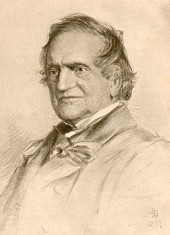
From a letter from Adam Sedgwick to his niece Fanny Hicks, July 23, 1846:
The miserable damp weather made me rheumatic and low-spirited, so I nursed one day in Carnarvon and then drove to Pwllheli. What a charming name! In order to pronounce the first part (Pwll), you must blow out your cheeks just as you do when puffing at a very obstinate candle; then you must rapidly and cunningly put your tongue to the roof of your mouth behind the fore teeth, and blow hard between your cheeks and your tongue, holding your tongue quite steady all the while, as a man does a spade just before he is going to give it a good thrust with his right foot. With such a beautiful direction you cannot fail to pronounce Pwll quite like a genuine Celt. Should the word be Bwlch, take care to observe the previous directions, only, in addition, while the wind is whistling between your rigid tongue (sticking forwards spade-fashion), and your distended cheeks, contrive by way of a finale to give a noise with your throat such as you make when an intrusive fishbone is sticking in it.
He added, “If you put off writing for a day or two, why then address me at Post Office, Machynlleth, North Wales. … yn is sounded as the grunt given by a broken-winded pavier.”
